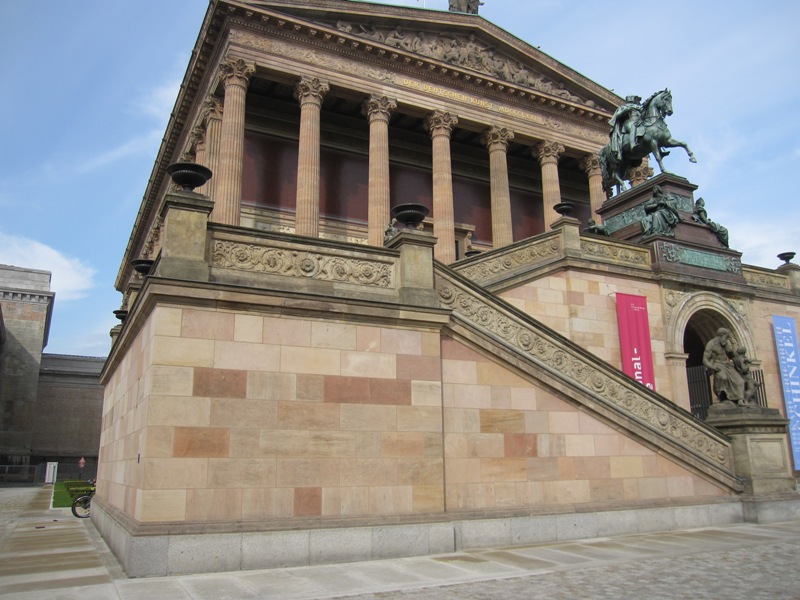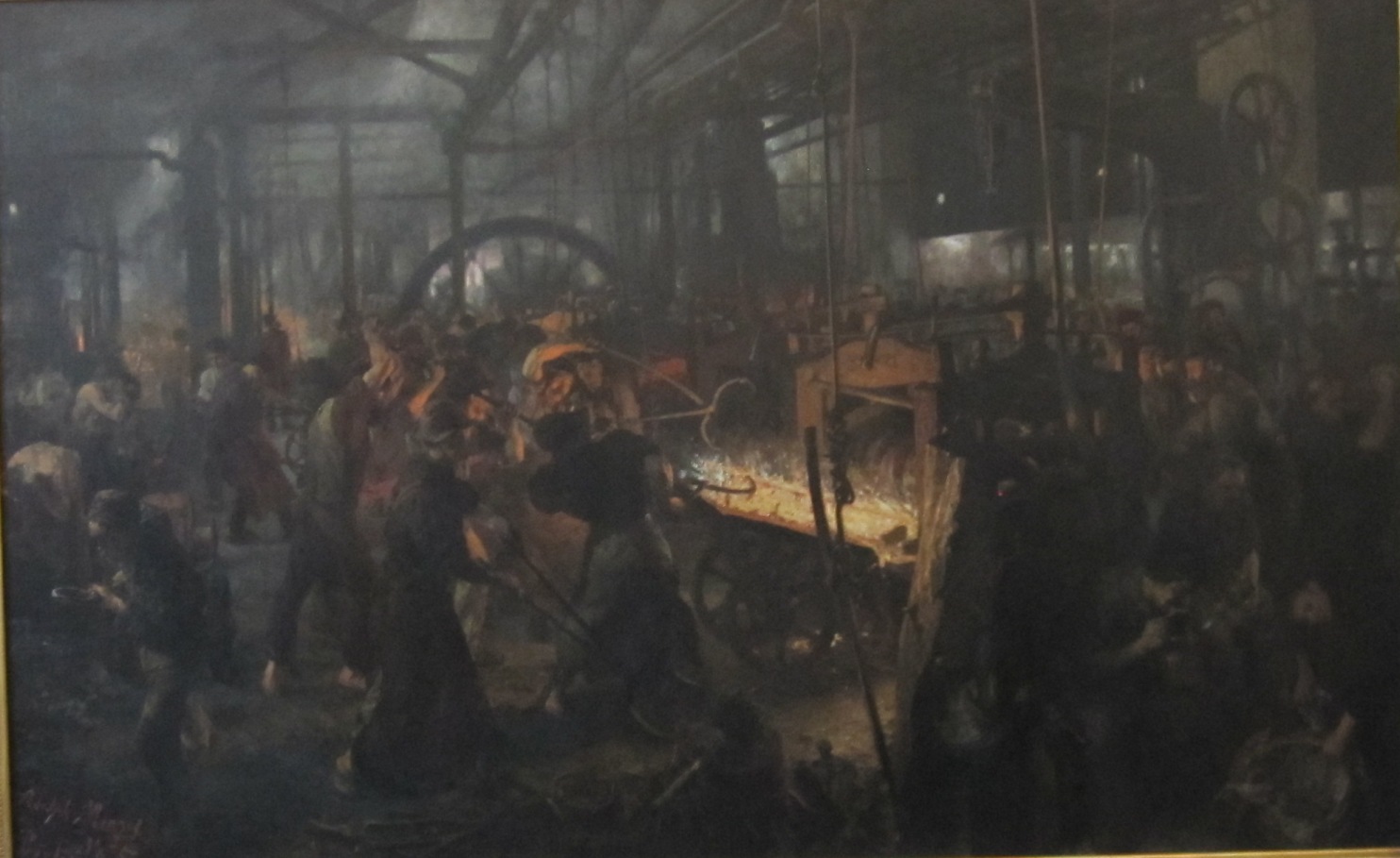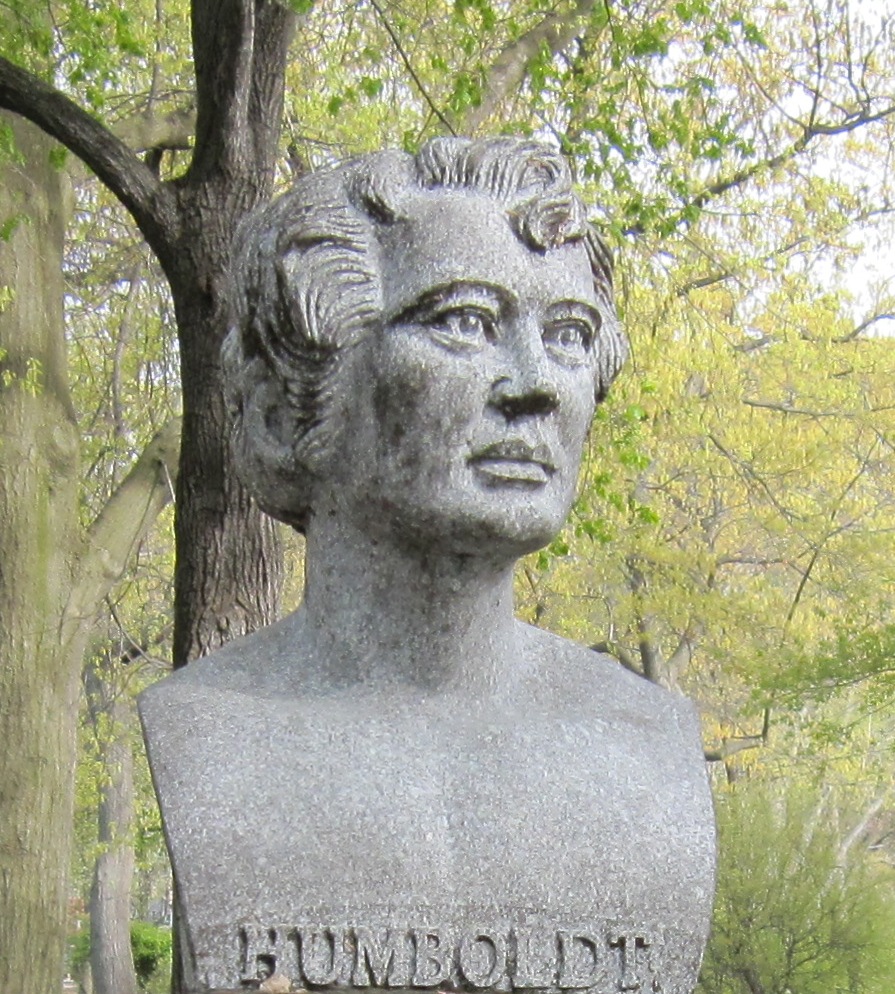Category Archives: 19th century history
I have a question
Nitty Gritty
My next appointment is with Inge Preuss, Curator at the Heimatsmuseum in Bad Dürkheim. The museum was founded in 1872.
 Especially impressive are the artifacts and depictions of wine-making. Before machines, many people worked together to harvest the grapes.
Especially impressive are the artifacts and depictions of wine-making. Before machines, many people worked together to harvest the grapes.

 Now, one machine accomplishes many days of work in a matter of hours.
Now, one machine accomplishes many days of work in a matter of hours.
 In earlier times, many people worked together.
In earlier times, many people worked together.
 Today, a farmer works mostly alone.
Today, a farmer works mostly alone.
 In earlier times, the grapes were pressed with musclepower.
In earlier times, the grapes were pressed with musclepower.

 Today, by computer and hydraulics.
Today, by computer and hydraulics.
Once upon a time, grapes fermented in a succession of barrels, siphoned from one to the next as the juice became wine. Yeast was not added, it lived naturally on the skin of the grape and the process took a longer time. When the alcohol content reached the right level, the yeast died and fell to the bottom of the barrel. Then it was time to siphon the wine into the final barrel, leaving the yeast at the bottom of the previous one.
 Once emptied, the barrels had to be cleaned by hand. See the little door at the bottom? It used to be someone’s job to squeeze through this little door to scrub out the inside of the wine barrel. It was said: “If the head fits through the door, so will the man.”
Once emptied, the barrels had to be cleaned by hand. See the little door at the bottom? It used to be someone’s job to squeeze through this little door to scrub out the inside of the wine barrel. It was said: “If the head fits through the door, so will the man.”
Artful living
 Berlin is not exactly on my thesis map, since my greatgreatgrandfather grew up not here in former Prussia, but in the southwestern Bavarian Pfalz. Nevertheless, I’m so glad I came, if only to visit the 19th century art exhibit at the Berlin Bodemuseum.
Berlin is not exactly on my thesis map, since my greatgreatgrandfather grew up not here in former Prussia, but in the southwestern Bavarian Pfalz. Nevertheless, I’m so glad I came, if only to visit the 19th century art exhibit at the Berlin Bodemuseum.
 I take over 100 photographs ohne Blitz, bitte (without flash). The paintings depict Biblical scenes and romantic landscapes, but also close-ups of artful living. I am especially indebted to Menzel for his painting of a 19th century rolling mill,
I take over 100 photographs ohne Blitz, bitte (without flash). The paintings depict Biblical scenes and romantic landscapes, but also close-ups of artful living. I am especially indebted to Menzel for his painting of a 19th century rolling mill,  and Hasenclever for his scenes of men reading newspapers and tasting local vintages.
and Hasenclever for his scenes of men reading newspapers and tasting local vintages.
“Look at that lamp,” I comment to Wolf as we peer at Hasenclever’s Reading Room. “It looks more modern than I would have thought.”
“Perhaps,” he says, “we could pick one up at IKEA.”
 Later, Wolf and his family prepare a feast of grilled lamb, zucchini and eggplant, hummus, tabouleh and pita for their friends Elke and Werner and me. We talk and laugh late into the evening.
Later, Wolf and his family prepare a feast of grilled lamb, zucchini and eggplant, hummus, tabouleh and pita for their friends Elke and Werner and me. We talk and laugh late into the evening.
Marburg, continued
 I’ve written about 2,000 words on my thesis this week, don’t ask me how. There’s so much distraction: the purple flower-studded trail by the
I’ve written about 2,000 words on my thesis this week, don’t ask me how. There’s so much distraction: the purple flower-studded trail by the  river, the bike ride to the Waldorf School, the kuchen and coffee at a local Konditorei. (I have to show you pictures
river, the bike ride to the Waldorf School, the kuchen and coffee at a local Konditorei. (I have to show you pictures  and make you jealous, it’s in my nature.)
and make you jealous, it’s in my nature.)
We ended the day at ye old Marburg University, founded in the 1500’s, the oldest Protestant University in the world. Among a gathering of anthropologists drinking champagne. (The topic of this year’s conference is South American indigenous cultures.)
 At our clutch of reception attendees, C. mentioned his difficulty understanding the keynote speaker, a French woman who delivered her speech in English from a written script. I was caught off guard.
At our clutch of reception attendees, C. mentioned his difficulty understanding the keynote speaker, a French woman who delivered her speech in English from a written script. I was caught off guard.
 “In English? To a German audience? Is this common?” I asked in English (naturally.)
“In English? To a German audience? Is this common?” I asked in English (naturally.)
“Excuse me? Common … ?” Bless his heart.
“I mean, is it normal, that you have to listen to lectures delivered in English?”
“Well, yes, of course. Everyone understands English. But this translation was from the French, and it was a bad one. But this is, how you say, also common.”
I am trying to speak German, but as you can see, my life is not so tough.
 On the walk home, in a fantasy land of lantern-lit pedestrian passageways, we stop outside an old apothecary to stare at the ghouls, reminding me it’s almost October.
On the walk home, in a fantasy land of lantern-lit pedestrian passageways, we stop outside an old apothecary to stare at the ghouls, reminding me it’s almost October.
Posted in 19th century history, Travels in Germany
Marburg is north of Frankfurt
 Marburg is a “university town” north of Frankfurt where my cousin Angela lives. Autumn rain greets us on arrival.
Marburg is a “university town” north of Frankfurt where my cousin Angela lives. Autumn rain greets us on arrival.
 “The weather is better in Freinsheim,” Angela says as we roam the streets looking for a wifi cafe. There are very few available. Eventually, we find one at Hugo’s, next to the cinema.
“The weather is better in Freinsheim,” Angela says as we roam the streets looking for a wifi cafe. There are very few available. Eventually, we find one at Hugo’s, next to the cinema.
 Along my journey, I’m always learning something.
Along my journey, I’m always learning something.
 “What is the name of your teddy bear?” I ask Angela’s daughter.
“What is the name of your teddy bear?” I ask Angela’s daughter.
“Arnica.”
“Annika?”
“No,” Angela corrects me. “Arnica, like the healing herb.”
 Or take this wall, like many others from earlier centuries, held together by a mixture of sand, egg whites and milk. Who knew?
Or take this wall, like many others from earlier centuries, held together by a mixture of sand, egg whites and milk. Who knew?
Posted in 19th century history, Travels in Germany
A little Marx-Engels goes a long way
At first as I envisioned this thesis topic, I had trouble imagining the mindset of a person living in the 1800’s, so I started skimming the writings of some of the great philosophers of the day: Locke, Hegel, Kant, Darwin …
Around that time, two classmates dropped by my house for a visit. One of them left the room and returned grinning like she’d found the key to my school locker.
“Guess what Claire has in her bathroom?” She held up a dog-earred paperback. “Friedrich Nietzche!”
Oh yeah?! So guess what I sleuthed out on her bookshelf? The Marx-Engels Reader! Ha!
Oddly, the Marx-Engels Reader has been one of my favorite nineteenth century heavyweights. Karl Marx goes into painstaking detail on human history. He strikes me as ridden with angst, desperate to determine how on earth human beings landed in such a commercial industrial fix. In Marx’s early years, the pre-industrial way of life, where people devoted their lives to the betterment of their families and their village, was in rapid decline. More and more people were moving to town for factory jobs and a monetary income.
Marx saw this trend toward focus on the individual as the loss of human interdependence and cooperation. I hear an echo in our “global community” parlance of today in these words of Karl Marx, written in 1845-46 in The German Ideology:
Only in community with others has each individual the means of cultivating his gifts in all directions; only in community, therefore, is personal freedom possible.
The wonder of it all
I am intrigued without cease about my mid-19th century thesis topic, about German immigrants to Cleveland, Ohio, about blacksmithing and carriage making, about the Rheinpfalz before and after 1848, and Cleveland from pre-Civil War America through the Gilded Age.
Whenever I sit down to write, I come up with more to wonder about. I submit here a smattering of questions from a recent writing jag:
– What flowers grow wild in the Rhineland-Palatinate?
– What wood are front doors made of in Freinsheim? in the 1850’s, would they have been painted, varnished, or oiled?
– In Cleveland during the Civil War, would a blacksmith have been doing his patriotic duty by staying at his forge, or enlisting as a soldier? Or?
– What parliamentary rights did Pfalzers lose after Prince Wilhelm brought his armies to the region in 1849?
– What superstitions were prevalent in the day, on either side of the Atlantic?
If you know the answer to any of these questions, or know where I might go to find out, I welcome your input.
By the by, here’s a link to inventors in the second half of the 19th century. We’re talking batteries, basketball and blue jeans …
Posted in 19th century history, General
Tinder news
My approach may be tangential, but for some reason, in writing about the 19th century I’ve felt compelled to read Charles Dickens. Maybe because I have two complete sets of Dickens novels, handed down from my ancestors, their spines staring me down from my bookshelves. Or perhaps because Charles Dickens visited the U.S. in 1842, travelled through Ohio no less, and wrote accounts about his visit, published as “American Notes,” in 1843.
So I’m reading David Copperfield, and recently stumbled across another clue in the ever expanding treasure hunt through the 19th century. I was wondering, for purposes of literary exposition, how people lit their hearth fires and pipes back then. In my reading of Ohio history, I’d found that the Diamond Match Co. was a significant part of history in Akron, Ohio, beginning in 1881. But when did matches first enter the scene? The right terminology in Dickens helped me delve further into my search. It turned up on pp. 90-91:
But the greatest wonder that I heard of Mr. Creakle was, there being one boy in the school on whom he never ventured to lay a hand, and that boy being J. Steerforth. Steerforth himself confirmed this when it was stated, and said that he should like to begin to see him do it. On being asked by a mild boy (not me) how he would proceed if he did begin to see him do it, he dipped a match into his phosphorus box on purpose to shed a glare over his reply, and said he would commence by knocking him down with a blow on the forehead from the seven-and-sixpenny ink-bottle that was always on the mantelpiece. We sat in the dark for sometime breathless.
That was it: nineteenth century phosphorus matches. I found all kinds of leads, here’s just one, at the Ideafinder.
Asphalt Anachronism?
The author Gore Vidal peppered his historical fiction novel 1876 (a novel about how Republicans bulldozed the election and bought electoral votes after their candidate Governor Hayes lost the popular vote–sound vaguely familiar? Who says history doesn’t repeat itself?) with incidental information about the newest technologies of the day. Typewriters, telephones, and perpendicular railways (elevators) were all coming into their own. By 1876, railroads had started the trend of vegetables shipped North from Florida to be devoured out of season, a luxury we still enjoy to this day.
Based on my research, all of Vidal’s references were historically plausible. But then, I stumbled across a reference to asphalt pavement. Really? Asphalt? I had to look into that one, and, yet again, Vidal is correct — Pennsylvania Avenue in Washington, DC was paved with asphalt in 1875. Of course it was. Why? Asphalt cement is defined in Wikipedia as: “the carefully refined residue from the distillation process of selected crude oils.” By the mid-1870s, we had struck oil big-time.
The Encyclopedia of Cleveland notes that by the 1880’s, the general consensus was that roads made of asphalt were ‘unendurable.’ Ha! No wonder we’re greeted by construction crews and orange cones on our highways every summer. Then again, at the time, asphalt was considered a better solution than “plank roads.” In the mid-nineteenth century, wood was so plentiful it was even used to build roads. Until it rotted and rutted, of course. Oops, never ones to think ahead, are we?
Posted in 19th century history
19th century Cosmos
 Modern-day denizens are more likely to associate the word “Cosmos” with Carl Sagan, the host of the 1980’s public television series of that same name.
Modern-day denizens are more likely to associate the word “Cosmos” with Carl Sagan, the host of the 1980’s public television series of that same name.
In the 19th century, however, Cosmos would have been associated instantly with Alexander von Humboldt.
The book jacket of The Passage to Cosmos, by Laura Dassow Walls, describes this “explorer, scientist, writer, and humanist” as:
… the most famous intellectual of the age that began with Napoleon and ended with Darwin. With “Cosmos” [1845], the book that crowned his career, Humboldt offered to the world his vision of humans and nature as integrated halves of a single whole. … Humboldt’s science laid the foundations for ecology and inspired the theories of his most important scientific disciple, Charles Darwin. In the United States, his ideas shaped the work of Emerson, Thoreau, Poe, and Whitman. They helped spark the American environmental movement through followers like John Muir and George Perkins Marsh. And they even bolstered efforts to free the slaves and honor the rights of Indians.
In 1869, across the United States, Humboldt centennials honored Humboldt’s 100th birthday (he had died ten years prior, in 1859). There were public gatherings and speeches and operatic arias. Walls notes: “The proceedings and reports of the 1869 Humboldt centennials show a country still fighting the battles of the late 1700s: was the United States a cosmopolitan nation based on reason, enlightenment, and liberation from superstition, as Jefferson had believed? Or was it still a Puritan stronghold resting on God’s word and providential design? A wide spectrum of positions had opened up around Humboldt, from conservatives upset with his failure to acknowledge the creator, to moderates like Agassiz and Bachman who appropriated him as a Christian in spirit if not in doctrine, to freethinking Transcendentalists like Emerson and Higginson, to radical materialist atheists like Heinzen and Ingersoll.” (p. 318)
Darwin’s Origin of Species came along in 1859, but by 1880, even Darwin’s theory of natural selection were subsumed by alternate theories, and wouldn’t re-emerge until the early twentieth century.
In her epilogue to Passage to Cosmos, Walls is eloquent:
Humboldt’s Cosmos is about regrounding imagination, about reimagining science, about reminding us that humans are natural and nature is human. … We have no language for speaking of humans and natures as a single, law-governed, dynamically interactive and reflective whole. So we face the future, this peril we have precipitated, shorn of tools and of the organs of perception that tools provide. Cosmos was the fabric that Humboldt spent a lifetime weaving, the one fabrication that, he thought, would make all our technologies and visions and hopes and poems speak to each other. Like groundwater, it’s still there under our feet …
(pp. 316-317)

